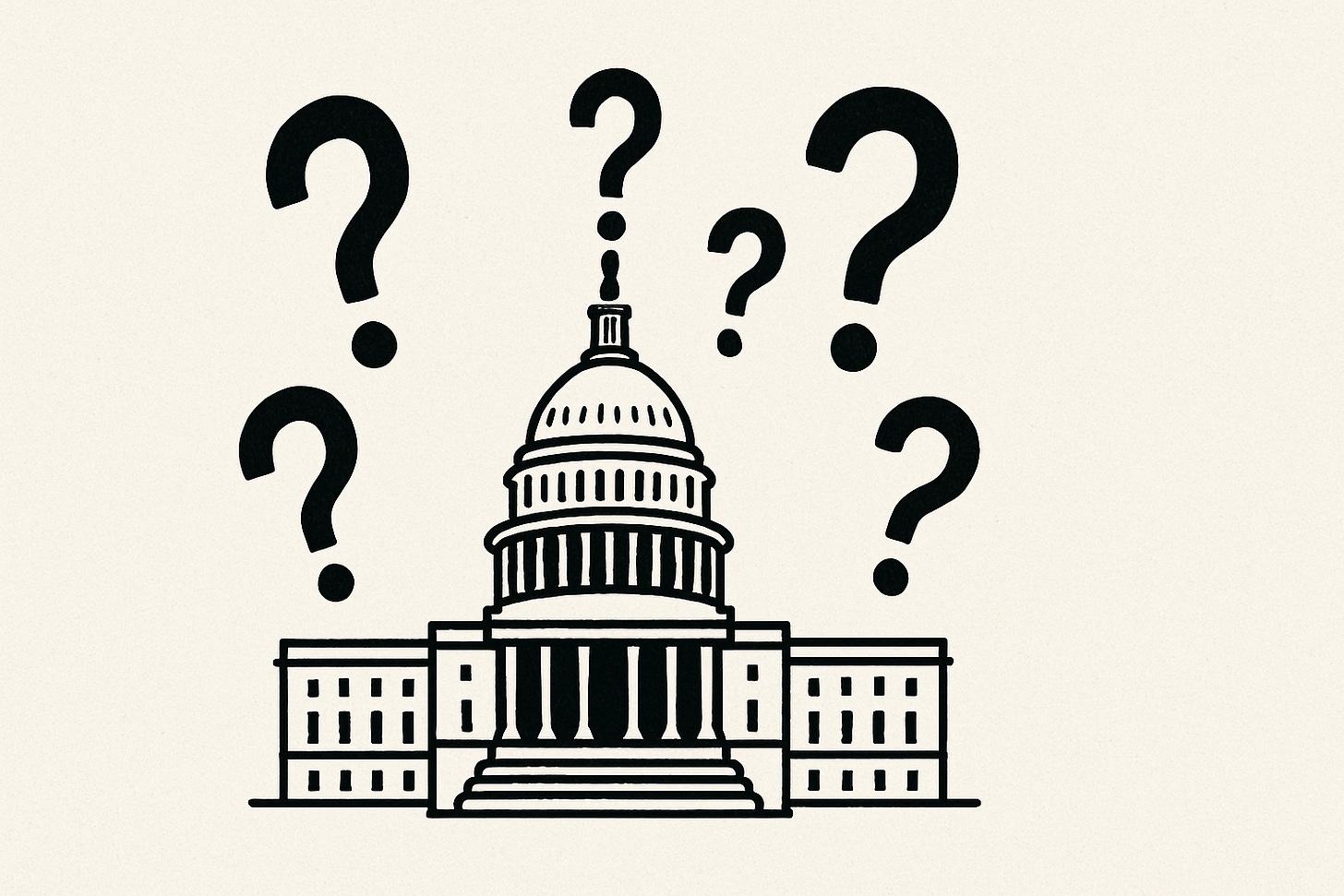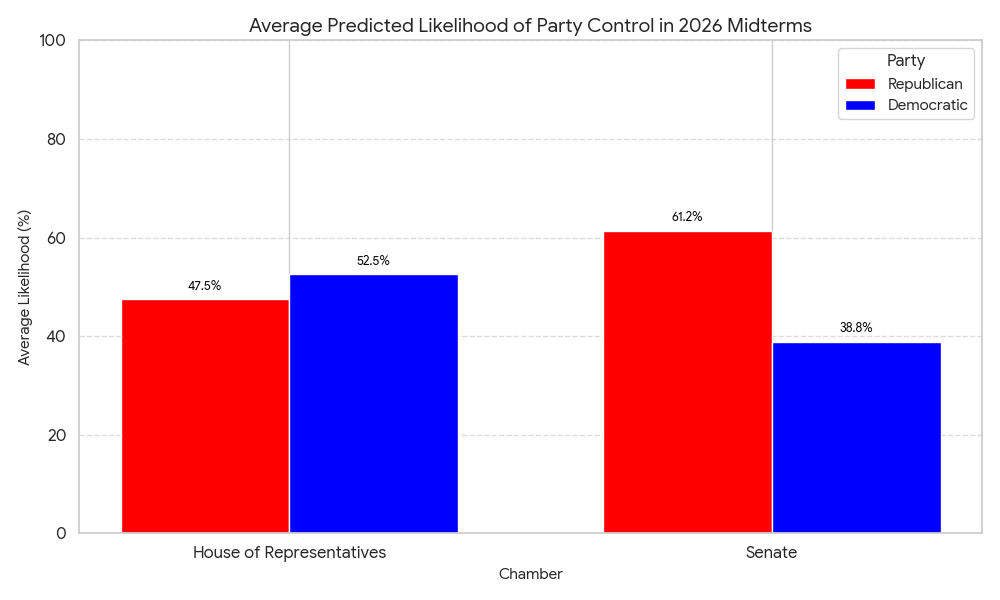Divided Algorithms: Why AI Models Disagree on 2026 Midterm Outcomes
The Senate seems more settled but predicting control of the House produces conflicting opinions among AI models
We’ve talked about presidential primaries in 2028, but what about an election that’s much closer?
The 2026 U.S. House and Senate elections are about 15 months away and will be the first big political test since President Trump’s election in November. Where do AI models stand on projecting which party will control Congress?
Historically speaking, the party that wins the White House usually loses in the midterms immediately following the presidential election. There have been some instances where this wasn’t the case, but it’s rare. The norm would be for Democrats to make inroads next year, but the forecast seems more rosy for the GOP than history would predict.
Here’s an average of four models when asked which party is most likely to win control of both chambers next year. There was universal agreement that Republicans are most likely to hold the Senate, but a split outcome on which party would win the House.
2026 Midterm Control - AI Model Average (July 22, 2025)
Here are the individual model results as of July 22, 2025, for which party is most likely to win control of both Congressional chambers in 2026.
Gemini
House of Representatives
70% - 🟥Republican
30% - 🟦Democrat
Senate
60% - 🟥Republican
40% - 🟦Democrat
Grok
House of Representatives
55% - 🟦Democrat
45% - 🟥Republican
Senate
60% - 🟥Republican
40% - 🟦Democrat
Claude
House of Representatives
65% - 🟦Democrat
35% - 🟥Republican
Senate
70% - 🟥Republican
30% - 🟦Democrat
ChatGPT
House of Representatives
60% – 🟦Democrat
40% – 🟥Republican
Senate
55% – 🟥Republican
45% – 🟦Democrat
Analysis
As usual, there is one outlier, and today is Gemini’s turn. Google’s flagship AI model is going all in on Republicans retaining control of the House by giving the party a 70% of holding the majority next year.
Asked to explain itself, Gemini provided this reasoning favoring GOP House control:
Structural Advantage: The current House map, heavily influenced by partisan redistricting, provides a significant structural advantage to Republicans, making it harder for Democrats to flip enough seats.
Targeted Turnout: Republican voters, particularly those highly motivated by the President, often show strong turnout in midterms, which can help mitigate losses even when their party holds the White House.
Democratic Challenges: If the Democratic Party struggles with effective messaging, national leadership, or recruiting strong challengers in key districts, they may not be able to capitalize sufficiently on traditional anti-incumbent sentiment.
Trump's Unique Influence: President Trump's direct engagement and unique appeal to his base could energize Republican voters in a way that counteracts typical midterm dynamics.
In other words, Democrats may face a more difficult challenge next year than many anticipate, and historical norms alone might not propel the party to victory.
On the other hand, Claude predicts with almost similar certainty (65%) that Democrats will win control of the House. The AI battle is on.
We will continue to watch this model and provide updates on a weekly and/or bi-weekly basis.



This model will become more useful I think in the coming months as focus shifts to the midterms after Labor Day